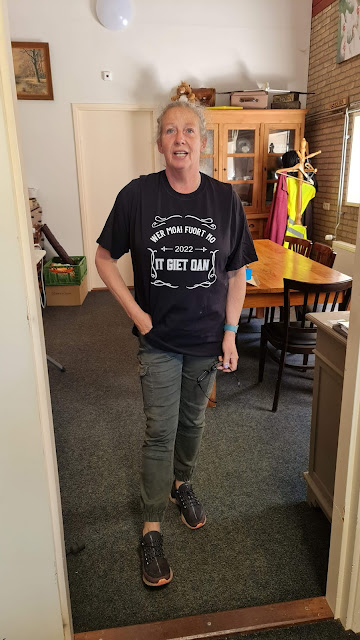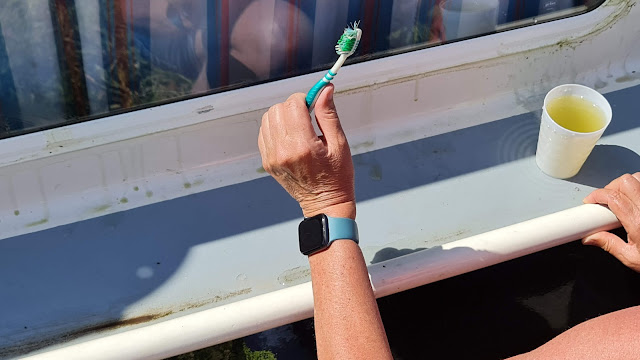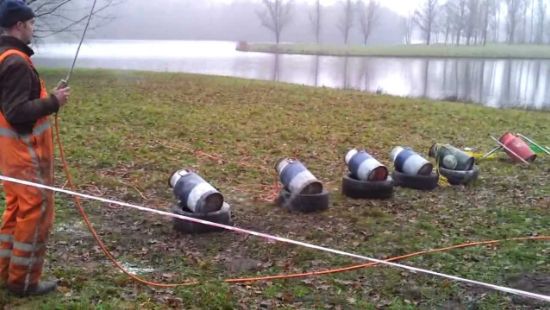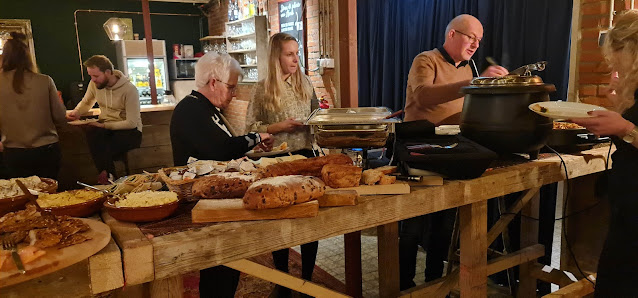Week 19
Week 19
Even in Wijnjewoude, there is an area set aside for the village residents who my not have much or any ground for a vegie garden.
Working in our own garden drew my attention to this article in nu.nl
Allotments are more popular than ever. Since the outbreak of COVID-19, the demand for your own vegetable or ornamental garden has taken off, spokesperson Herman Vroklage of the General Association of Public Gardeners Associations in the Netherlands (AVVN) told NU.nl.
If you want a patch of ground, you have to be patient. Most allotment societies have long waiting lists of up to two years. Some associations have even set a holding period, which means that registration is not possible at the moment.
Vroklage understands why the demand for allotments has increased during the corona pandemic, "because what on earth did you have to do? You could be in your garden and you could have contact with the neighbors over the hedge. An allotment garden is a safe haven." ."
According to him, the gardens also attracted the attention of many walkers, especially during the lockdown periods. "Those people also thought: an allotment garden would be great."
But the pandemic is not the only cause of the increased popularity of allotments, according to Vroklage. "More and more people like to know what they eat. They have certainty on their plate. At a supermarket, that's just a matter of not knowing."
Gardening is hip
Furthermore, the allotments have long ceased to be a male stronghold, as was the case in the 1960s, says Vroklage. According to him, you see more and more young families and women. The highly and less educated are also creating next to each other in the earth. "It has become a cross-section of society."
The vegetable garden campaign of supermarket chain Albert Heijn may also have played a role in the growing popularity of gardening. Vroklage calls the vegetable gardens a "nice introduction" to growing crops yourself. Especially for children, "who learn in this way that what they get on their plate does not come from the factory".
Finally, anyone who wishes to become a member of an allotment association and apply for a garden. However, many boards first ask about a candidate's motivation. "In this way you avoid disappointment on both sides, because it is not a hobby that you do one Saturday afternoon a month," says Vroklage. "Depending on the size of the garden, you spend about four to eight hours a week on this."
Facts and numbers
Allotments come in various shapes and sizes: from vegetable gardens with fruit and vegetables to ornamental gardens with flowers, ornamental plants and ponds.
Article:
Allotments are more popular than ever. Since the outbreak of COVID-19, the demand for your own vegetable or ornamental garden has taken off, spokesperson Herman Vroklage of the General Association of Public Gardeners Associations in the Netherlands (AVVN) told NU.nl.
If you want a patch of ground, you have to be patient. Most allotment societies have long waiting lists of up to two years. Some associations have even set a holding period, which means that registration is not possible at the moment.
Vroklage understands why the demand for allotments has increased during the corona pandemic, "because what on earth did you have to do? You could be in your garden and you could have contact with the neighbors over the hedge. An allotment garden is a safe haven." ."
According to him, the gardens also attracted the attention of many walkers, especially during the lockdown periods. "Those people also thought: an allotment garden would be great."
But the pandemic is not the only cause of the increased popularity of allotments, according to Vroklage. "More and more people like to know what they eat. They have certainty on their plate. At a supermarket, that's just a matter of not knowing."
Gardening is hip
Furthermore, the allotments have long ceased to be a male stronghold, as was the case in the 1960s, says Vroklage. According to him, you see more and more young families and women. The highly and less educated are also creating next to each other in the earth. "It has become a cross-section of society."
The vegetable garden campaign of supermarket chain Albert Heijn may also have played a role in the growing popularity of gardening. Vroklage calls the vegetable gardens a "nice introduction" to growing crops yourself. Especially for children, "who learn in this way that what they get on their plate does not come from the factory".
Finally, anyone who wishes to become a member of an allotment association and apply for a garden. However, many boards first ask about a candidate's motivation. "In this way you avoid disappointment on both sides, because it is not a hobby that you do one Saturday afternoon a month," says Vroklage. "Depending on the size of the garden, you spend about four to eight hours a week on this."
Facts and numbers
An allotment garden is a private garden that is not adjacent to the owner's home.
Allotments come in various shapes and sizes: from vegetable gardens with fruit and vegetables to ornamental gardens with flowers, ornamental plants and ponds.
The costs of an allotment garden vary between 200 and 850 euros per year.
The surface area of all allotments in the Netherlands together is 3,600 hectares (36 square kilometers).
The Screen Printing Project
Last Sunday, we had a go at printing a T-shirt, after having successfully prepared a frame...
I then had to align the "spider" (not sure what it is called, but it is the machine on which the printing is done - with 4 arms for applying up to 4 colours on one shirt)
Janny then applied the ink through the screen onto the shirt...(after watching many hours of Youtube).
I had to use my paint-stripper heat gun to dry the ink for a few minutes and then it went to the heat press for the final step...it is water-based paint, so this step is crucial for curing the ink.
Janny then washed the shirt, just to make sure that it didn't wash out...
All good!
Now, we have a woman who comes once a week to see if she would like to work in this field - she had a "burn-out" of sorts and it was recommended that she come to us as part of her "getting back on her feet".
She is tied up with the church and with the school because she has 2 primary school kids. They have been looking at getting distinctive T-shirts for the kids when they go on school outings (so they don't lose them) - so Janny may well have her first order coming up - they are already working out a logo - with not too many colours!
Boeke and Tassie
Boeke gives Tassie a hiding every now and then - just to let her know who's in charge - strangely, Tassie doesn't fight back - it might be a different story if she did! All she does is bring Boeke a dead mouse occasionally, as some sort of appeasement...
When Boeke is on the lead, Tassie hangs around and even comes for walks with us...
Best of mates, drinking at the same fountain...
Janny kept saying how relaxed she was and I was just happy to be on the boat! Or at least next to it reading a book and tending to Boeke.
It looks as though there might be an unoccupied mooring where we planted ourselves...Janny is going to call the harbour master tomorrow to find out.
On Sunday morning Janny washed all the windows - with paint-scraper and toothbrush! They hadn't been done properly for quite a while!
Still trying to figure out the main hatch - one of the websites suggests just replacing the glass to stop the leaks - we'll probably go that option, as the rest of it still looks in good condition.
I cleaned out the "everything else" drawer and found this... from 2010
This may well be the first year that we had been in with this boat...The Turfroute has now been absorbed into the general boating scene - I read somewhere that the yearly maintenance costs were going to be around 2 million euros - shared by federal and local government. Our own local government said just last week that their costs are expected to be €40.000,00 above budget.
We filled the bus with diesel on the way home - €150,00!! For years it has been around €100,00

































Comments
Post a Comment